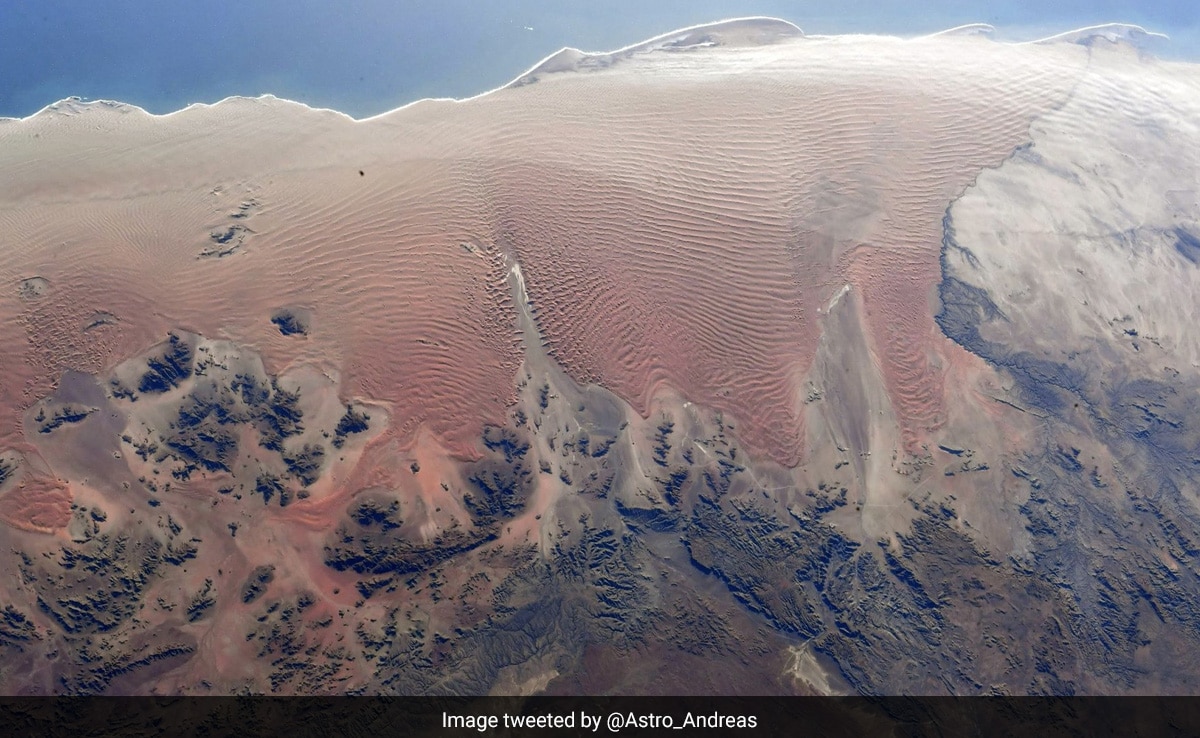One of the photos also shows a crater-like formation in the desert.
An astronaut of the European Space Agency (ESA) has shared breathtaking photos of the Namib Desert in western Namibia captured from space. The Namib is believed to be among the oldest deserts on Earth, dating back 55 million years.
In a post on X, formerly Twitter, on Friday, Danish astronaut Andreas Mogensen shared a few photos of the Namib showcasing the features of the coastal desert. “The rolling sand seas of the Namib desert along the coast of Namibia. It is perhaps the world’s oldest desert, stretching back 55-80 million years,” he wrote.
One of the photos also shows a crater-like formation in the desert surrounded by sand dunes which, according to Mr Mogensen, is the Brukkaros Mountain.
“A little inland of the sand dunes, is the Brukkaros Mountain. Although it looks like a meteor crater when seen from space, it is actually a caldera, about 4 km in diameter, that formed from an underground explosion when groundwater was superheated by rising magma,” he wrote.
The rolling sand seas of the Namib desert along the coast of Namibia???????? It is perhaps the world’s oldest desert, stretching back 55-80 million years. A little inland of the sand dunes, is the Brukkaros Mountain ????Although it looks like a meteor crater when see from space, it is… pic.twitter.com/dCeUpuhEkl
— Andreas Mogensen (@Astro_Andreas) September 15, 2023
The Namib, considered to be one of the driest places on Earth, means “an area where there is nothing” in the local Nama language.
According to US space agency NASA, the Namib coastal desert is formed due to a cool ocean current called the Benguela Current. The current suppresses rainfall in the region but creates morning fog that gets trapped on the surface of the sand dunes and allows sparse vegetation growth in some places.
The dunes in Namib Desert, formed by strong onshore winds, are the tallest in the world measuring as high as 1,167 feet in places.
The dunes are created when materials get transported from thousands of kilomteres by river, ocean current, and wind. The reptiles and mammals in the arid region rely on fog, which is their primary source of water.
Waiting for response to load…



















